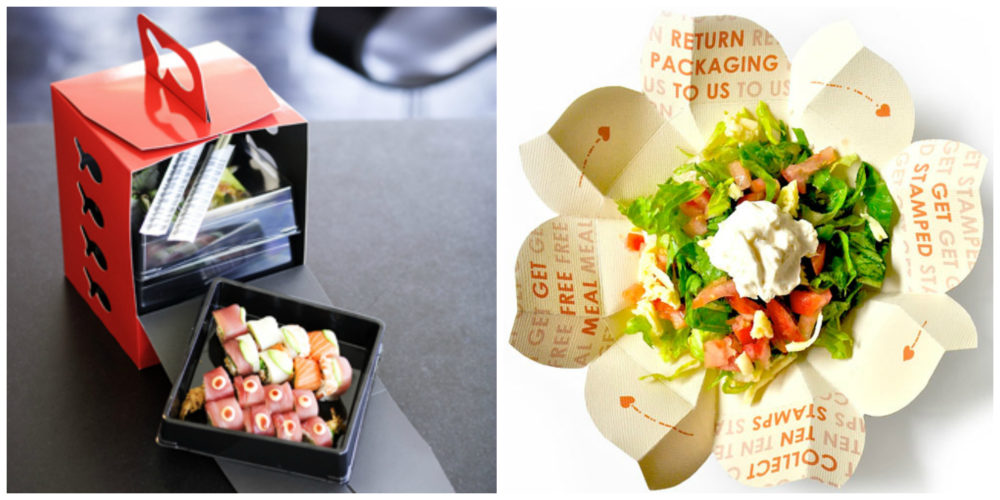Marketing Forum
How Gen Z Differs from Millennials, and Why Restaurants Need to Take Notice
Millennials–you can love them or hate them, but if you’re in the hospitality industry, you simply can’t ignore them. They’ve surpassed baby boomers this year as the largest living generation, which means they also have the most collective disposable income to spend on dining out and taking trips. Their purchasing patterns, values and behavior have been analyzed and dissected for years by now, and every restaurant or hotel worth its salt has a strategy in place to bring them in.
But what about Gen Z? It may sound premature, but despite not yet being old enough to legally consume alcohol, those born after 1995 are already making their presence felt in the hospitality industry. They spent $78 billion at restaurants in 2016, and according to a recent QSR article, it’s not too soon to start devising a strategy to appeal to Gen Z. However, there are a few important ways that strategy needs to differ from how the industry approaches millennial customers.
Unlike their millennial counterparts, Gen Z has never known a time without smartphones–this includes their dining experiences. While millennials may remember having no choice but to call for reservations, much of Gen Z has likely never placed a phone call for a reservation. Instead, they’re used to interacting with apps or tablets. Their comfortability with technology permeates every aspect of the dining experience, even before they enter the restaurant. As such, smart restaurant owners understand that they need to stay ahead of the curve when it comes to technology. A seamless mobile web experience is a basic requirement and a presence on their favorite food delivery apps, like Caviar or DoorDash, is even better–but the golden ticket is a well-designed, easy to use proprietary app that actually enhances the dining experience and fosters brand connection, even when a Gen Z diner is not in the restaurant.
Another key difference is Gen Z’s diversity, both in their demographic makeup and their menu expectations when dining out. Gen Z is the most diverse generation ever, with only 54% in the U.S. identifying as Caucasian. This also naturally influences their tastes and preferences, with fusion cuisines being hugely popular. But just blending various global flavors isn’t enough–Gen Z-ers, like millennials, also care deeply about authenticity, nutrition and environmental impact. They want to know where their food comes from, how healthy it is, and if it’s an accurate representation of that particular culture’s cuisine.
Although they share some similarities, Gen Z presents a set of unique challenges for the hospitality industry. The restaurants who are forward-thinking enough to capture this emerging group will be rewarded for their foresight in the long run.

Digital Screens and Their Effect on Check Averages
By: Michael Gorecki
Could check averages be increased by using an online or digital ordering system? According to a study conducted by the University of Berkeley, they can1. The reason, they believe, is caused by a phenomenon called the online disinhibition effect.
Food Halls: The New Marketplace Combines Hospitality, Retail & Lifestyle
By Brooke Secor
Food Halls are popping up all over the place, and for good reason. Operating costs continue to rise across the county and owners of restaurants, bars and hotels are developing new business practices to counter the impact of skyrocketing rents, the lack of affordable workers and the high costs of food supplies. The new school of development includes full-service restaurants, bars, shopping and plenty of ways to relax and connect with your neighbors while supporting local purveyors by a one-stop shop. Blending traditional sit-down eateries with delis, grocery stores, and highly integrated retail spaces have been trending for the past few years with no signs of slowing down. Retailers struggling to stay competitive in a landscape dominated by online shopping are using hospitality to sell experiences and lifestyles and restaurants are looking for sales beyond the menu. Housing developers are finding it important to incorporate retail, great food and beverages as amenities.
Over the past decade, the United States has seen an increase in development of urban areas that include more emphasis on mixed-use buildings and innovative marketplaces. Although public marketplaces have long been popular in other countries, the rise of the automobile and plenty of undeveloped space in suburban areas led many to be replaced by modern shopping malls. A generation or two later, malls sit abandoned or are being replaced by “lifestyle centers” that mimic an urban experience. Unifying communities and infusing neighborhoods with businesses that aim to bring local eateries, bars, makers, and craftspeople together is at the heart of urban development and many are doing it all under one roof. Sharing overhead costs allow small business to thrive in part of a larger marketplace while the combined foot traffic leads to increased sales.
It’s no secret that locals and tourists alike have been flocking for decades to the 200-year-old French Market in New Orleans or legendary Pike’s Place in Seattle. Baltimore, St. Louis, Philadelphia, Los Angeles, San Francisco and many other cities have long-standing public markets that have proven to be successful business models and tourist destinations. The newly renovated Union Station in Denver combines a truly functional transportation hub with boutique shopping, gourmet dining, hip bars and a chic hotel just as NYC’s Grand Central has done for 150 years. Furniture retailer Restoration Hardware has opened three restaurants in their stores where every dining table, napkin and plate is for sale.
Dimes in New York City has notably stood out as one a successful recent example of a restaurant selling a lifestyle along with groceries, a deli, and house brand skin care while Eataly has been doing it for years with a growing footprint. Similarly, Beans & Barley in Milwaukee started 40 years ago as health food store that began to offer hot food and has since expanded to a full restaurant that serving many items that can be taken home from their adjoining grocery store and deli.
Taking a cue from public markets across the world, China Live and Tartine Manufactory are two of San Francisco’s favorite places to spend a couple hours indulging in food and drinks with plenty of places to sit with a cup of coffee or tea before you peruse the myriad of curated artisan products and local crafts. If you’re at the latter, visitors can linger in an Eames era chair sipping a Gibraltar and flipping through a copy of Kinfolk. China Live integrates a tea counter alongside a standing cocktail bar just outside the dining room which features eight different food stations, each with specialized equipment for dumplings, charcuterie, and even an earthen Chinese oven. The emporium includes retail space filled with imported culinary ingredients, cooking tools, and upstairs one of the city’s most expensive and exclusive options for fine dining awaits at Eight Tables.
What’s next? We’re looking forward to visting SoHo’s furniture and design store Roman and Williams Guild with the recent addition of La Mercerie, a cafe, bakery and restaurant in the shared space. Fast casual restaurant, Locol, from celebrity chef/restaurateurs Roy Choi and Daniel Patterson is partnering with Whole Foods Market in Silicon Valley. Brewery Bhavana in Raleigh, NC combines a library, florist, dim sum and a brewery in a beautiful space built by friends. Cameron Mitchell Restaurants in Columbus, OH is planning a food hall that will act as an incubator for new restaurants. Food has always been a connector and a social experience. We love this trend and can’t wait to see how it continues to evolve.
Taking Takeout to the Next Level
By: Michael Gorecki
Seven seconds is all the time it takes to form an opinion of something and give it a value. For restaurants, that means as soon as a guest walks through the door they must be wowed. That’s the value of having great decor, vibrant atmosphere, and a host or hostess there greeting patrons with a smile. However, with the increase of takeout and third-party delivery services, guests aren’t always getting the sensory experience of dining in the restaurant. Whatever is in that to-go bag determines what a guests’ first impression is and, almost always, those first moments leave them feeling a little unmoved.
Takeout can sometimes be the only interaction a guest may have with your restaurant. That means that the way your takeout is prepared and presented is extremely important to your brand. So what is their first impression? For many, it’s a brown sack with some plastic utensils, maybe a spork, and a few paper napkins on top of a box of travel-weary food.
So what can you do to make a great impression? Having beautiful, functional packaging is the easiest way to make an impactful and memorable delivery experience.
The Aesthetic
Think about the material you use. How does it feel? How does it look? Make sure that each aspect is consistent with your style and in-restaurant experience. If it all looks great from the outside, take it apart. Unwrap your packaging just like your guests would and lay it out. How does that presentation look?
By making your takeout visually stunning, you are providing a sensory experience your guests would have if they were dining in your restaurant.
Check out this beautiful packaging from Guactruck, in the Philippines, which uses an origami flower shaped packaging that creates the illusion of a bud opening up into a full bloomed flower. It is not only visually stimulating but it is also practical because of it functionality. And quite frankly, it makes us want to eat those nachos.
The Function
Coinciding with the visual aesthetics of your packaging is its functionality. Is your packaging easy to operate? Are there smooth fluid movements from opening the bag to reaching inside and grabbing the food or are you reaching into a giant hodge podge, blindly trying to find the fork.
We love this packaging from Sticks‘n’Sushi which takes its to-go packaging seriously. It uses a single box to hold separate smaller shelf-like boxes that all contain different types of cuisine. Its clear organization allows guests to easily see where everything is and leads to a smooth pleasurable dining experience. And how fun is this to unwrap!?
The Creativity
Having something delightfully unexpected can take delivery to the next level. But what is most important here is making sure that it is true to your brand – don’t tie your box in a beautiful silk bow when you are a fast-casual pizza joint.
Some ideas:
•Include a fun placemat
•Add a simple or personalized note: e.x. “Eat me.”
•Add in tissue paper and make it feel like they’re opening a present
By making your takeout packaging a part of the dining experience and not an afterthought, you can better reinforce and represent your brand, stand out from the crowded delivery market space, and provide an amazing sensory experience for your guests.
Make sure you make your guest’s first impression a great one…because there are no second chances at first impressions.

TREND ALERT: IS ORDERING-IN THE NEW EATING-OUT?
By Kyle Osher
Delivery is no longer relegated to monochrome Chinese menus on the fridge and 45 minute cold pizzas. While the nostalgia of those late-night standards will forever hold a lukewarm place in our hearts, delivery now means so, so much more. With sophisticated technology and innovative logistic systems, companies like Amazon and Uber are rapidly shaping a world where anyone can get anything at the push of the button. The future is now and we’re all buying into it.
As consumer culture increasingly values the convenience and efficiency of delivery services, The NDP Group predicts that at-home dining will continue to surpass in-house restaurant covers over the next ten years in their article, Delivery – A Growth Opportunity On the Horizon. If your business hasn’t partnered with a delivery platform yet, it may be high time to consider it. Take a look at celebrity chef David Chang’s new delivery only establishment, Ando, featured recently on Eater. To help weigh your delivery decisions, we’ve created a little list of Pros and Cons for you.
Partnering with a delivery service can:
Allow your team to focus on what they do best – providing a high quality product and experience for guests.
Expand your brand’s reach through valuable marketing partnerships.
Increase revenue during slower periods of operation or expand your operating capacity beyond your 4 walls.
Improve your image and add to your brand equity with exclusive offers.
Convert take-away guests to in-store loyalists.
Things to consider before diving in:
A lot of platforms include high percentage fees leaving you with slimmer margins. Be sure to run the numbers and view all delivery costs as part of your marketing budget — one that pays for itself.
Ensure that your menu reflects your concept and travels well. Don’t dilute your brand just to provide a turkey wrap for delivery if you concept revolves around seafood. The Melt, a San Francisco based fast casual chain, has developed an advanced catering delivery system to ensure their grilled cheeses arrive crisp, gooey and delicious. Read more about their custom packaging in the article by Nation’s Restaurant News.
Offers should be value oriented as opposed to discount-based. Guests should perceive value through access and ease not discount and speed. They should feel excited to be able order their favorite chicken-parm sandwich at the touch of a button, not a mediocre salad with 15% off.
Don’t make promises you can’t keep. Only offer what you can deliver in a timely and controlled manner.



